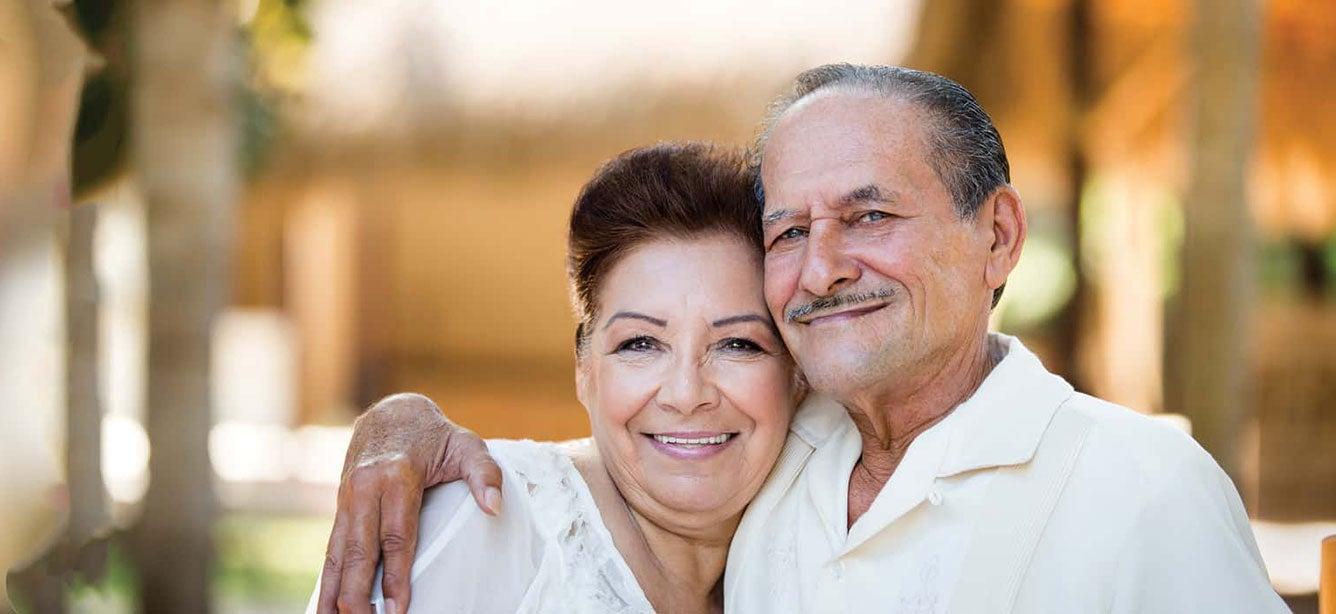
Where and how will I live?
These two questions have grown increasingly important for older adults and their caregivers, and for good reason: According to the Population Reference Bureau, the number of Americans age 65+ is expected to increase to 82 million by 2050—a 47% increase from 2022.1 What's more, a person turning 65 today has a nearly 70% chance of needing some type of long-term care in their remaining years.2
This historic demographic shift means traditional models of aging likely will need to evolve.
“Most people want to remain at home well into their later years,” explained healthy aging expert Kathleen Cameron. “For a variety of reasons, that isn’t as manageable as it might once have been.”
For starters, many older Americans don’t have children—or children who live nearby—to help pitch in on home repairs or handle tasks that can become more difficult with age, like mowing the yard or cleaning the apartment. And hiring out for these services at a time when demand is high, and prices have risen to match, can prove difficult.
You can be fully capable of taking care of yourself yet find that maintaining a home is too physically or financially stressful,” Cameron said. “That’s when it might make sense to look into other options that better meet your needs.”
Independent living communities can offer the best of two worlds: combining the privacy and individual autonomy of separate housing quarters with the reduced burdens of housecleaning, landscaping, maintenance, and even meal preparation. And many such communities provide “step-up” services if and when residents need skilled physical or memory care.
Of course, this type of housing can be expensive, which begs the question: Will Medicare pay for independent living?
Let’s take a look.
Understanding Medicare and independent living
What is Medicare?
Medicare is a federal health insurance program that covers a wide range of services to keep you healthy as you age. Generally, you must be 65 or over to enroll, though younger people with certain disabilities or health conditions also may qualify for coverage.
There are four distinct parts to Medicare, referred to as A, B, C, and D. Each of these pays for different types of care ranging from in-patient hospital stays to prescription drug benefits.
It’s important to keep in mind that Medicare is different from Medicaid, which is a public health insurance program for low-income people of all ages.
What is independent living?
Independent living describes a variety of housing options for older adults who are able to take care of themselves but want additional services and support.
These communities differ in design and size, though many offer residents the choice to live in private apartments or small detached homes arranged around one or more common spaces. Amenities may include:
- Shared dining facilities with optional prepared meals
- Regular housecleaning
- On-site services, such as banking
- Recreational opportunities
- Social activities and outings
- Group and individual transportation
- 24-hour staff and facility security
Older adults who wish to join an independent living community generally pay an up-front “buy-in fee” (which may be partially or fully refundable if the resident leaves) as well as monthly rent to cover their living space and facility services.
Independent living is not the same as assisted living. That said, many independent housing choices exist within “continuing care retirement communities,” which include assisted living, memory care, and skilled nursing facilities on the same campus. If and when they need it, residents have the option to transition into a higher level of care.
Does Medicare cover independent living costs?
Here’s what you need to know about the different types of Medicare plans and whether they will or won’t cover independent living expenses.
Original Medicare and independent living
Original Medicare, also known as traditional Medicare, is the name for Medicare Parts A and B. These cover inpatient and outpatient care, respectively.
Original Medicare does provide limited coverage for short-term stays (100 days or less) in a skilled nursing facility following a qualifying inpatient hospital admission. It does not pay for independent living, however, because those costs are not medically necessary.
Medicare Advantage and independent living costs
Medicare Advantage, or Part C, is a way to receive your Part A and Part B benefits through a private insurer rather than the federal government. Some Medicare Advantage plans offer additional coverage for dental, eye, and hearing care. Many also include prescription drug (Part D) benefits.
As with original Medicare, Medicare Advantage plans will not pay for your independent living expenses.
Medicare Supplement (Medigap) and independent living costs
Medigap is optional additional coverage that you can purchase from private insurers. As its name implies, this kind of plan helps bridge the gap between what Medicare Parts A and B will pay for, and what those services actually cost you in out-of-pocket expenses—including deductibles, copays, and coinsurance.
Since Medigap provides supplemental Medicare coverage only, it also will not cover independent living costs.
Independent living costs and payment options
How much does independent living cost?
It depends on where in the country you live, and the specific independent living community you choose to live in. According to U.S. News & World Report, the national average monthly cost of independent living is $3,065.3 This number represents the rental fee only; it does not include property amenities.
Alternative ways to pay for independent living
Medicare, Medicaid, and long-term care insurance will not pay for the costs of independent living. That means most residents use personal savings, Social Security income, pension payments, retirement accounts, proceeds from the sale of their home, or other private funds (such as a loan from a relative) to cover this expense.
The bottom line
Medicare and other health care plans don’t cover independent living expenses. Speaking to a qualified financial counselor can help you better understand the lifetime cost of moving to an independent living community, and how that cost fits into your own personal budget plan.
Frequently asked questions about independent living
How much does Medicare pay for independent living?
Medicare does not cover independent living costs.
What is the average cost of independent living?
What you pay depends largely on where you live and which independent living community you choose. You may need to make an up-front “buy-in” investment in addition to paying monthly fees that cover your living space and all included amenities.
How can I get help with my Medicare coverage choices?
Whether you'll soon be eligible for Medicare or you want to switch plans, your local State Health Insurance Program (SHIP) can help. Find your SHIP office today to get unbiased guidance from a trained counselor.
Sources
1. Population Reference Bureau. Fact Sheet: Aging in the United States. January 9, 2024. Found on the internet at https://www.prb.org/resources/fact-sheet-aging-in-the-united-states
2. Administration for Community Living. How much care will you need? Found on the internet at https://acl.gov/ltc/basic-needs/how-much-care-will-you-need
3. U.S. News & World Report Health. How to Pay for Senior Living. September 20, 2024. Found on the internet at https://health.usnews.com/senior-care/articles/understanding-how-to-pay-for-senior-living


